For my first few posts, I thought I'd share some pictures from a pretty good day of golf I had a few weeks ago: I played Double Eagle in the morning, and The Golf Club in the afternoon. Photos from our afternoon round will be posted later.
Double Eagle is known for hosting about 25 rounds a day, and for being in phenomenal shape. To that end, it did not disappoint.
The first hole is a medium-length par 4. After (hopefully) finding the fairway, this is your approach:
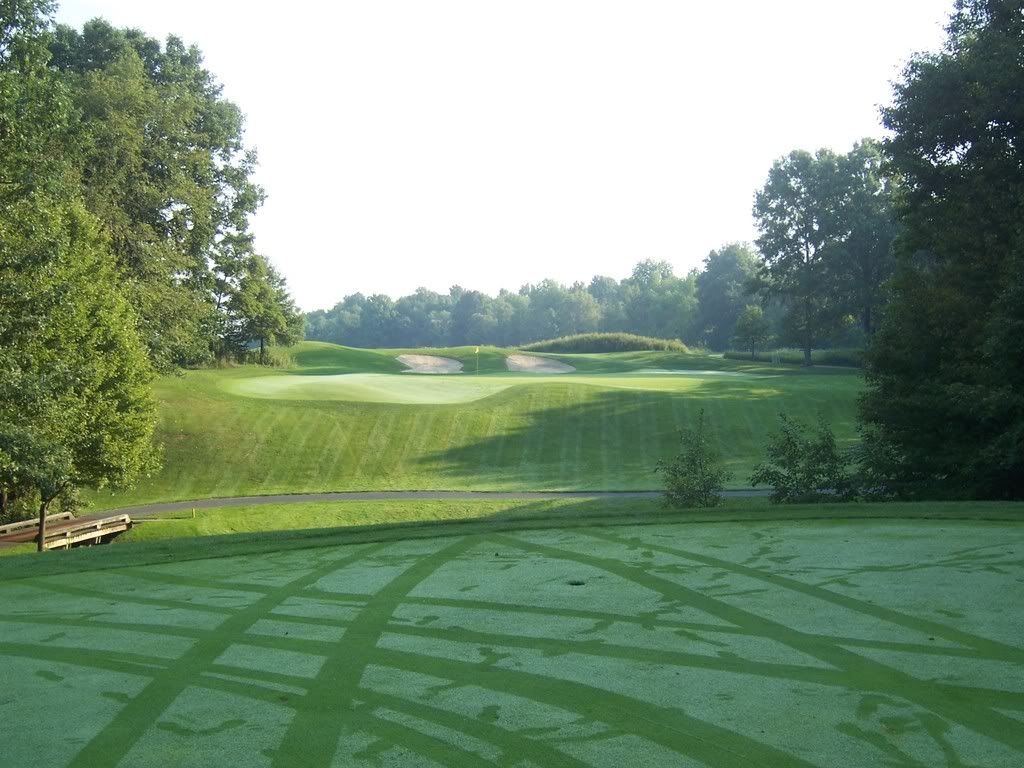
This is the par 3, 160-yard fourth:
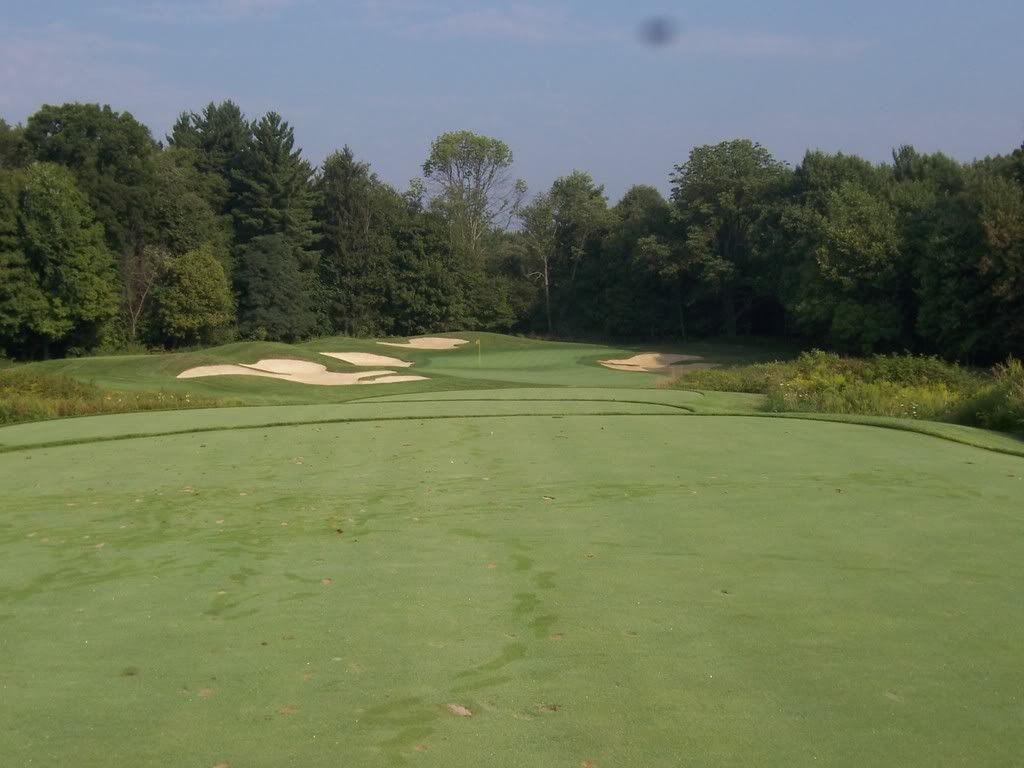
The fifth is a long, dogleg-right par 4. The second shot, which is usually around 200 yards or so, plays over a ravine to a large green, with a huge bail-out to the left:
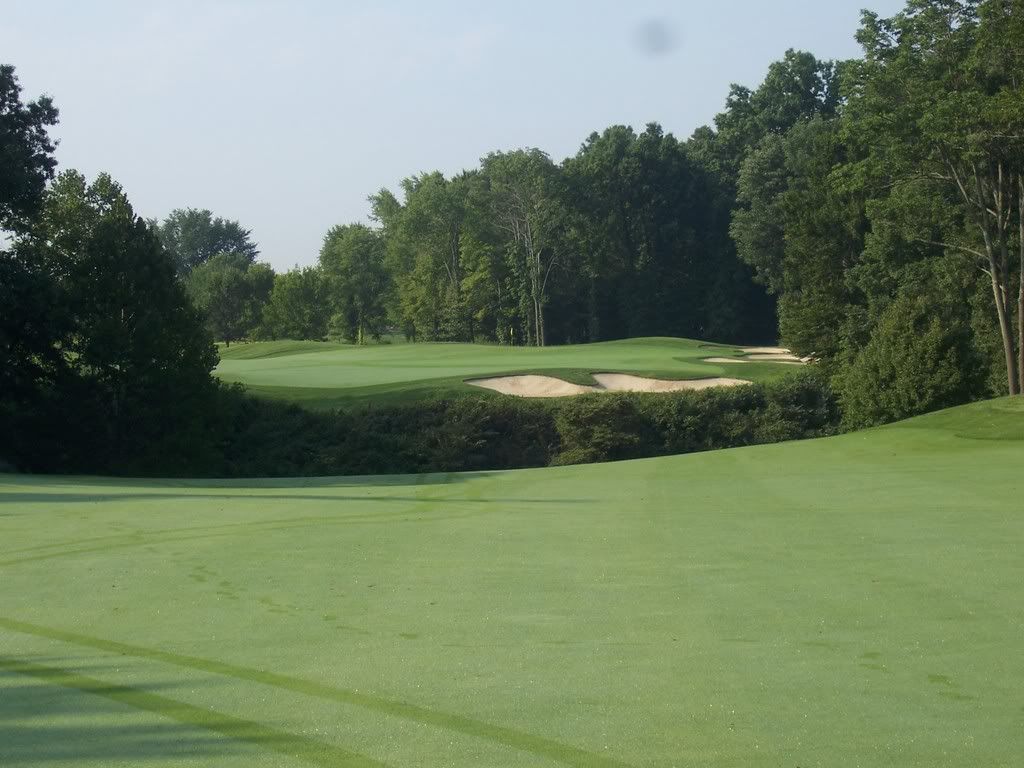
This is the tee shot on the sixth, a dogleg-left par 5.
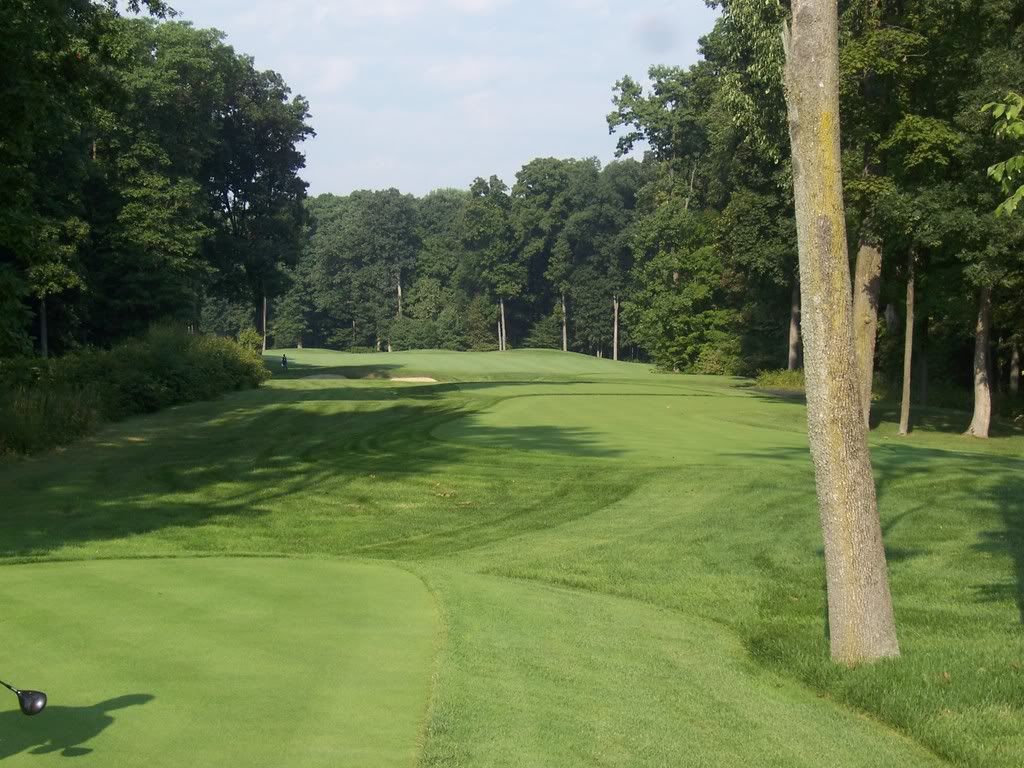
The seventh is a short, straight par 4. Like the fifth, the second shot here is played over a ravine. Unlike the fifth, it is played with a short iron. To be able to attack the entire green, your tee shot should find the right side of the fairway. My friend, as you can see from his golf ball, did not do that:
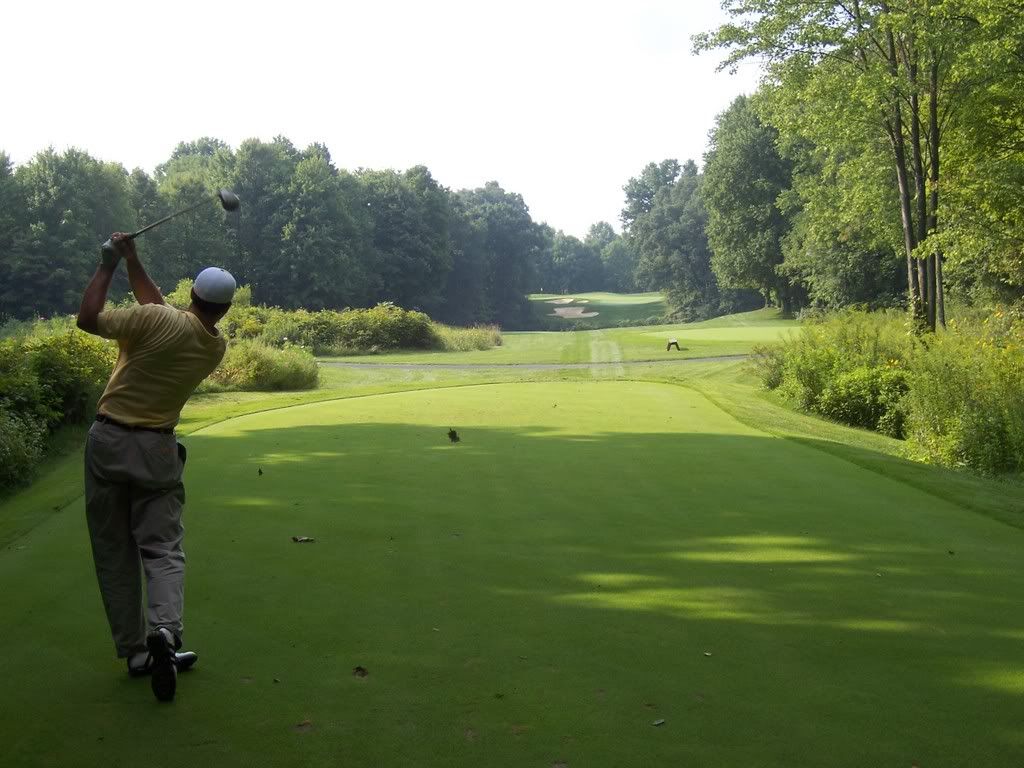
The seventh from behind the green:

The eighth is a 200-yard par 3, played to a wide, shallow green:
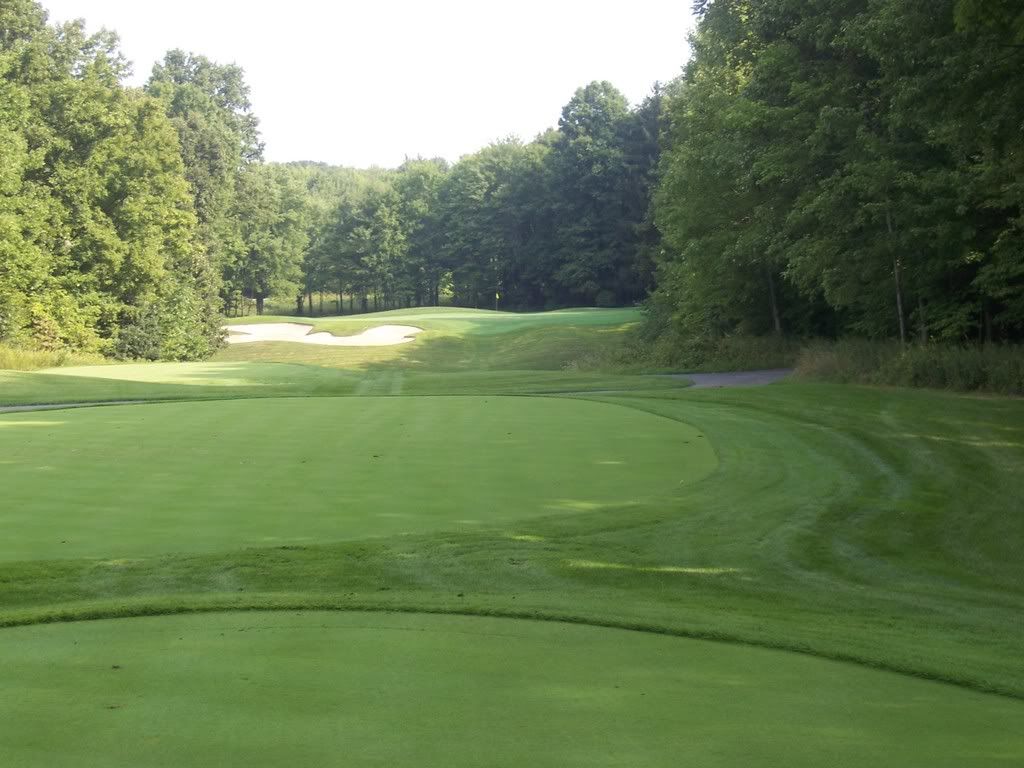
Nine is a long par 4. The fairway is very wide, but is separated by bunkers running up the middle. The most direct route to the green is via the right side, but it brings in the bunkers in the middle of the fairway, as well as bunkers to the right of the fairway. The is the tee shot:
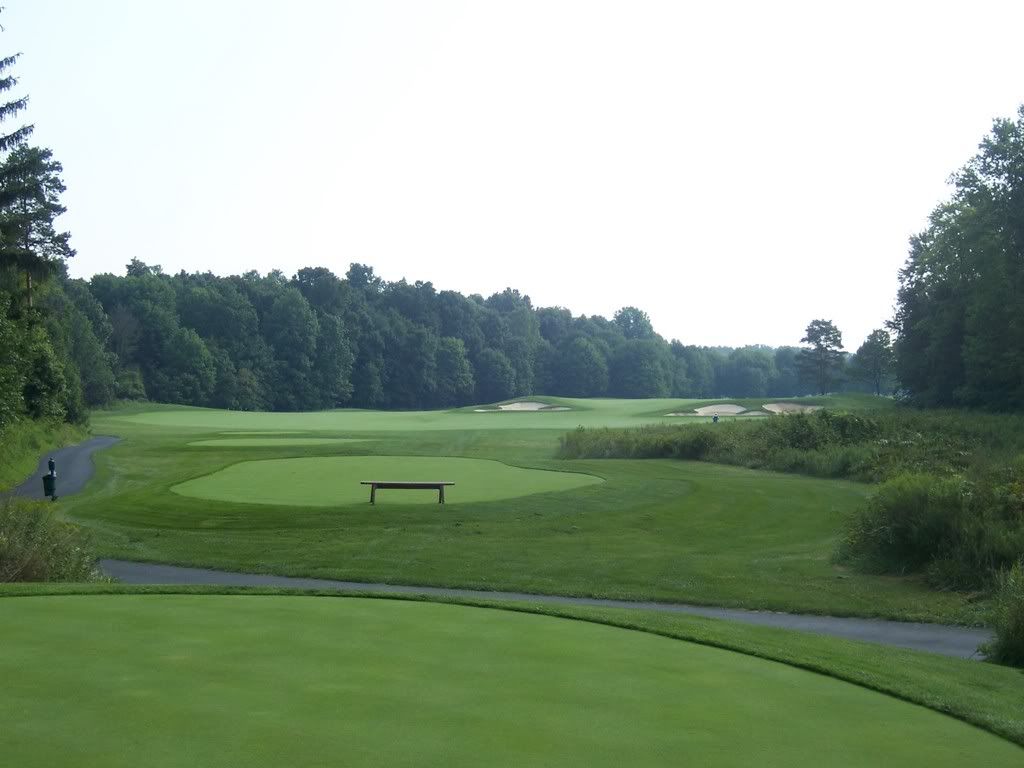
Weiskopf and Morrish put in "spectacles" bunkers that, although they look like thay are right in front of the green, are actually 40 or so yards in front:
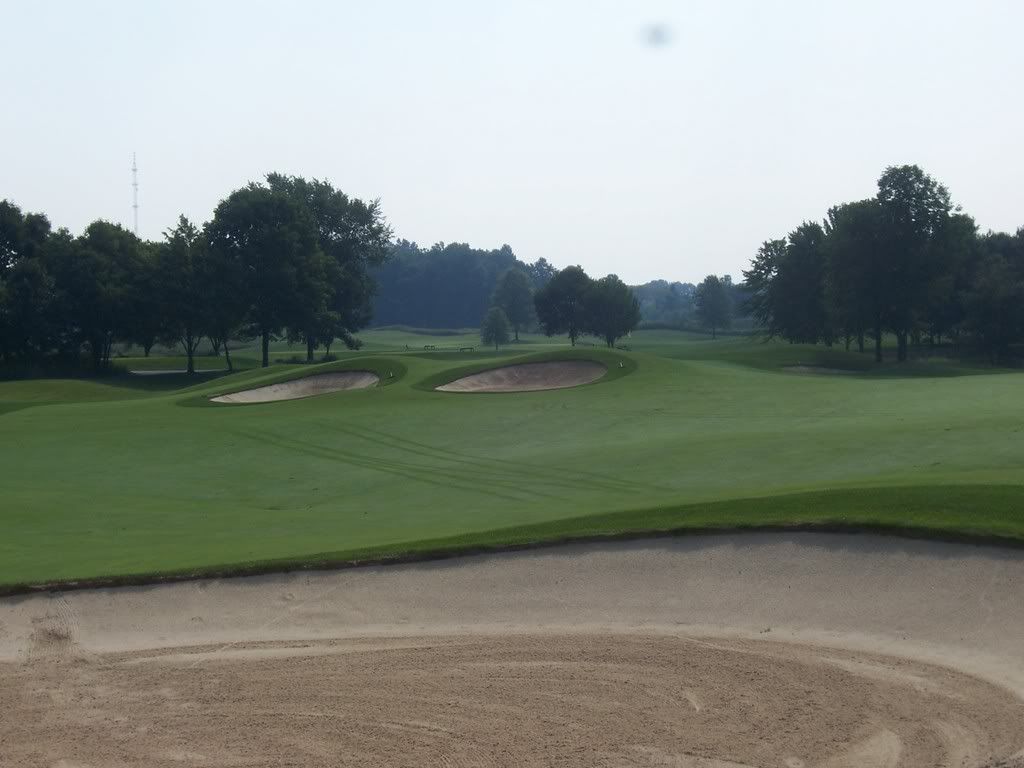
The par 4 tenth runs parallel to the first. The green slopes hard from back to front. This is the approach:
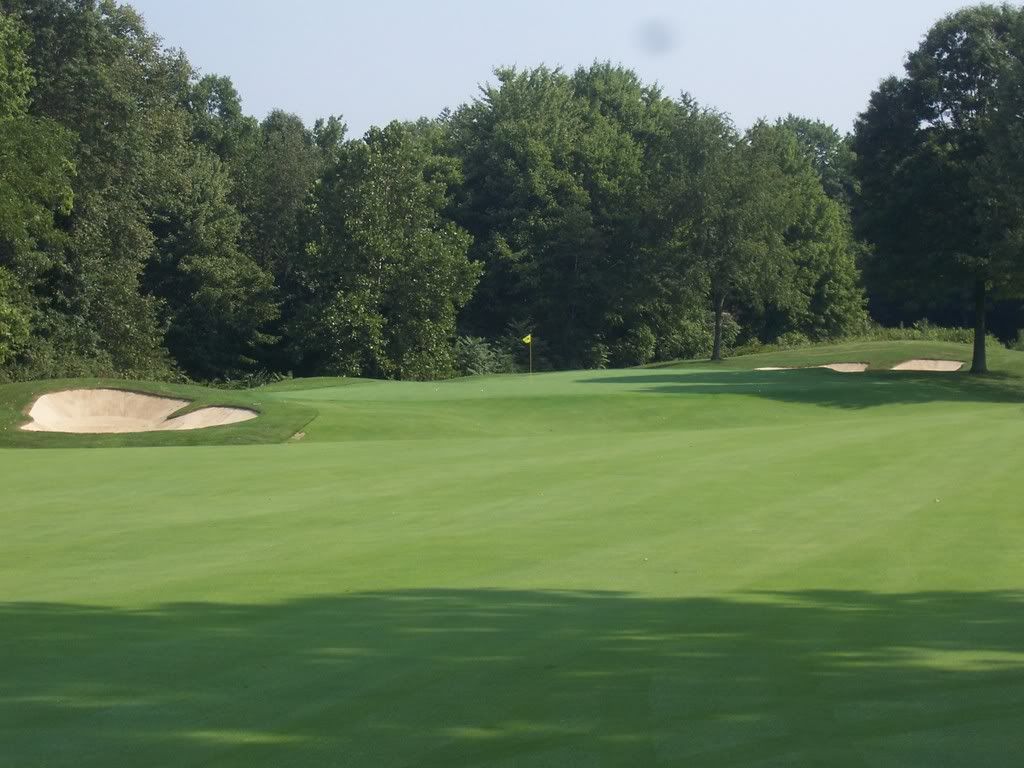
This is the tee shot on the par 5 eleventh. Not much to see, other than what must be carried off the tee. The fairway is very wide, but if you miss it you are often in trouble:
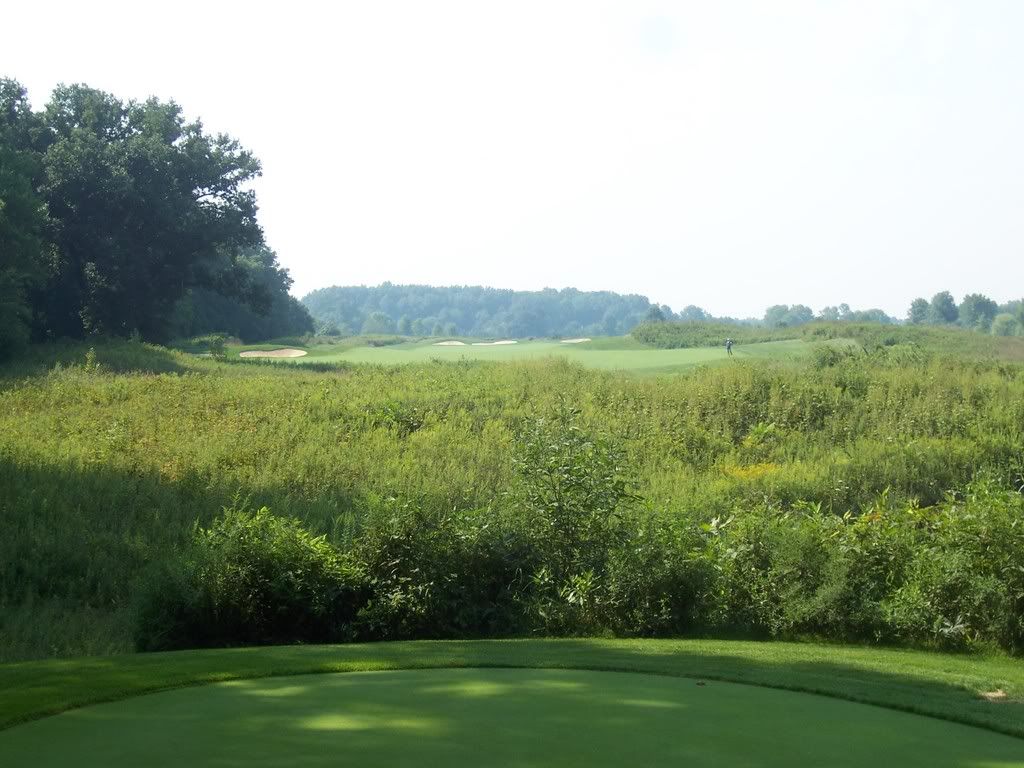
The twelfth is a dogleg-left par 4. This is the approach:
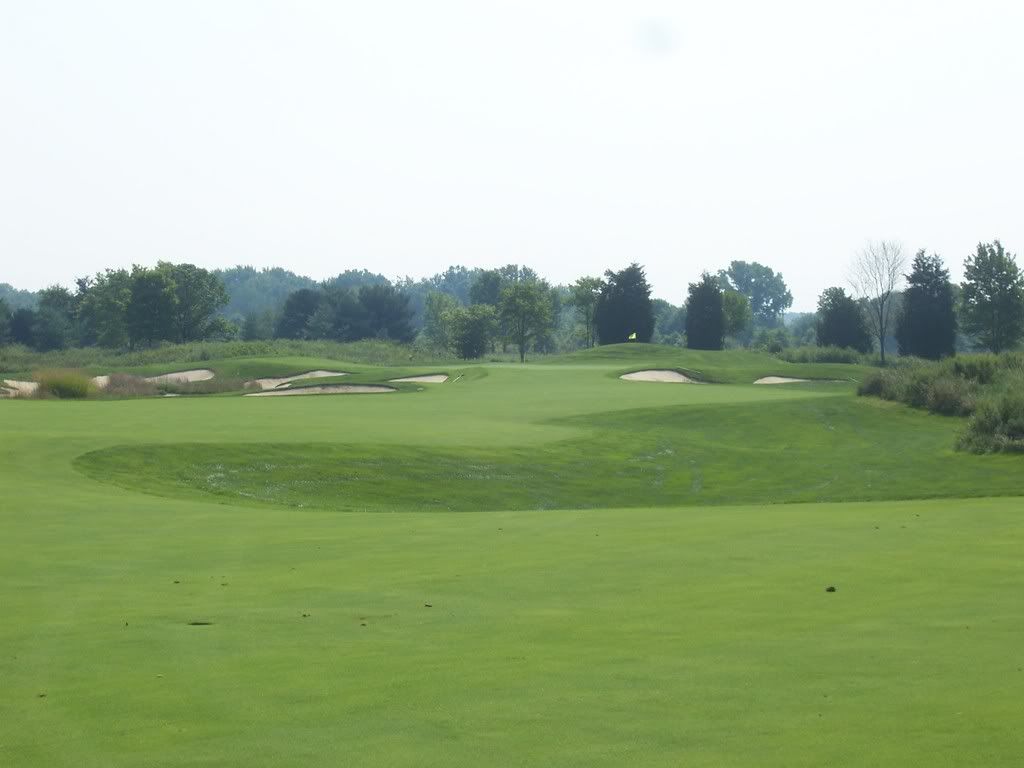
Taken from the thirteenth tee, this is the large bunker complex short and left of the twelfth green:
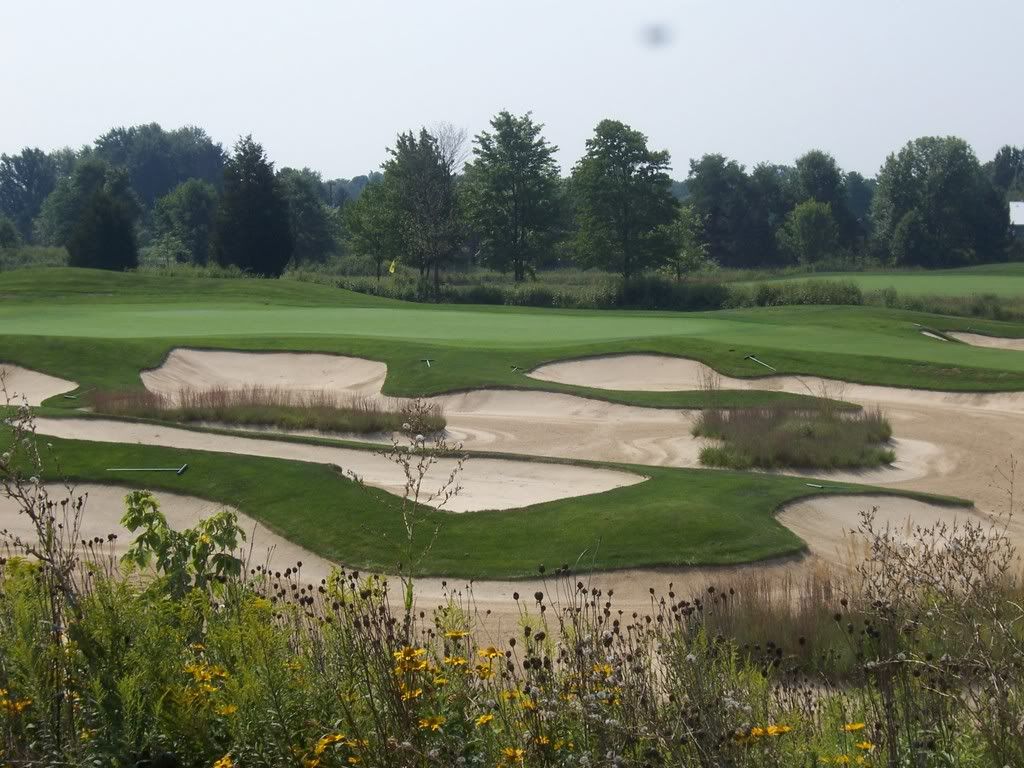
Thirteen is a short par 3 of 135 yards:

Fourteen also doglegs to the left. Hit your tee shot at the red barn:
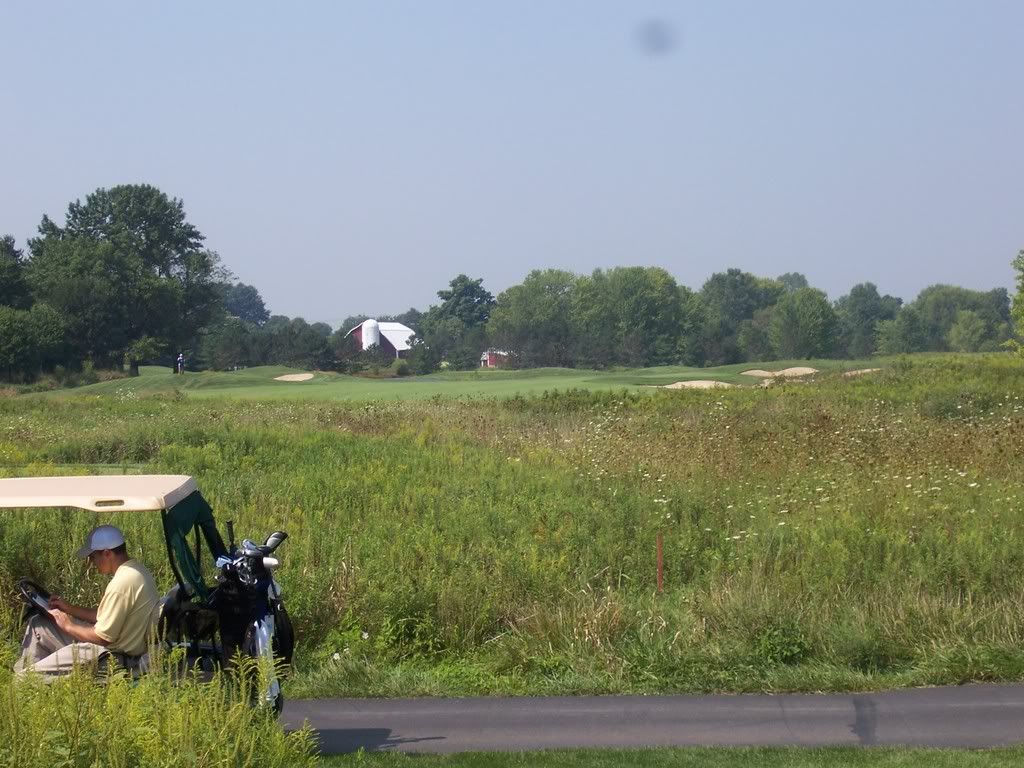
This is the approach to fourteen:
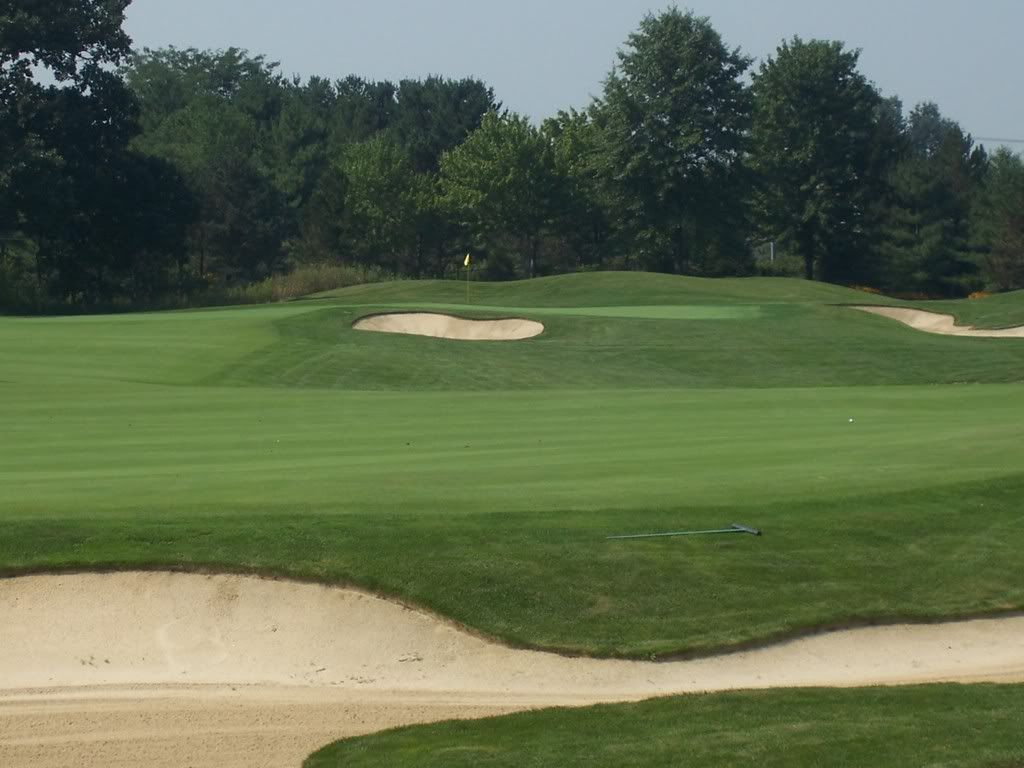
This is from the tee of the fifteenth, a cape hole of about 465 yards:
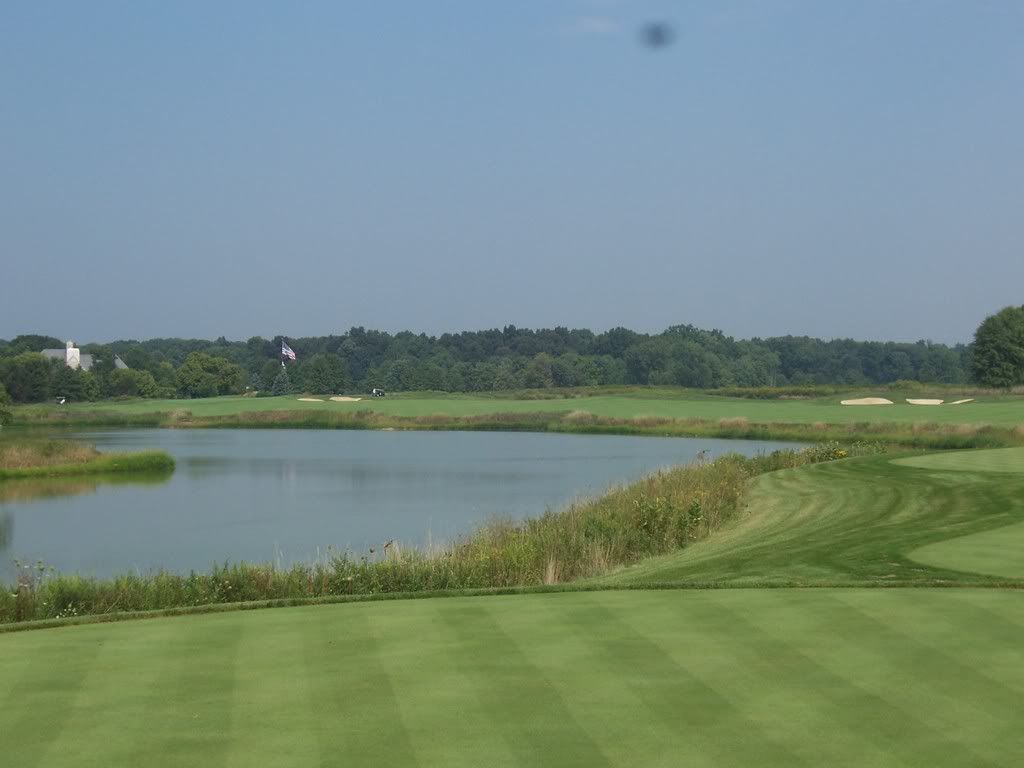
The sixteenth is a par 3. The hole can play anywhere from 170 yards if the hole is on the left, to 200 yards (over a part of the pond) if the hole is on the right:
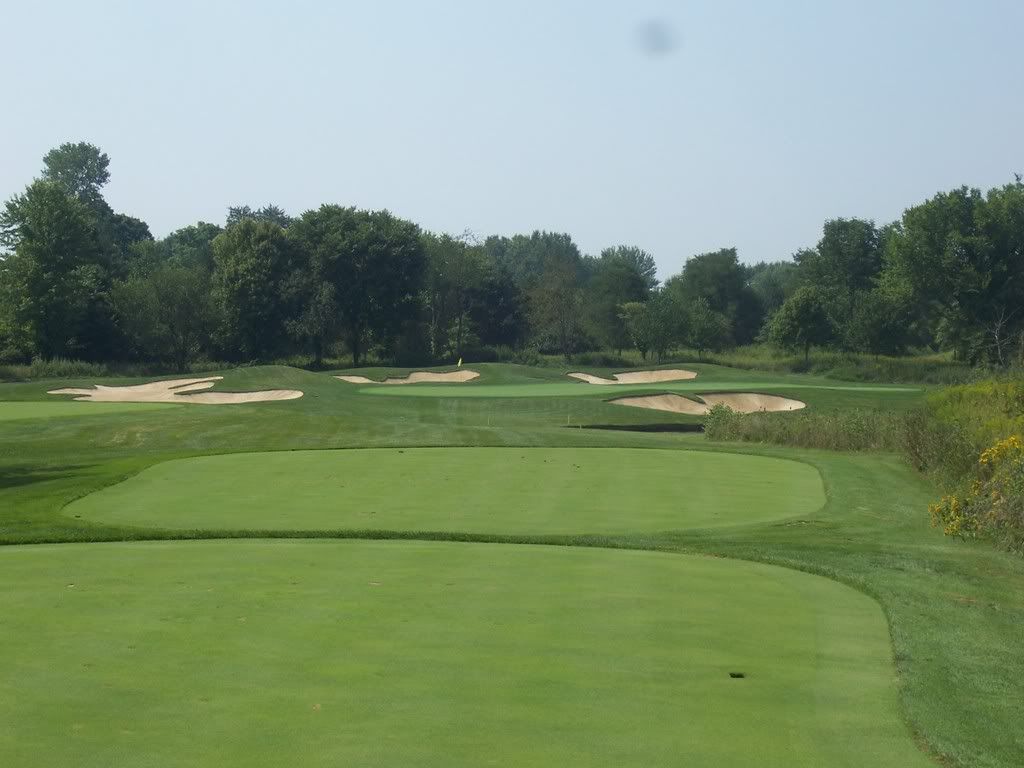
As with most courses designed by Weiskopf and Morrish, there is a short, driveable par 4. The seventeenth at Double Eagle certainly qualifies. What can't be seen in this picture is the pond that sits to the right of the fairway and green. If you go for the green, you'd better hit it straight. If you choose to lay up, you play to the left of the trees, and then have a pitch over a huge bunker complex, to a green that's 50 yards long:
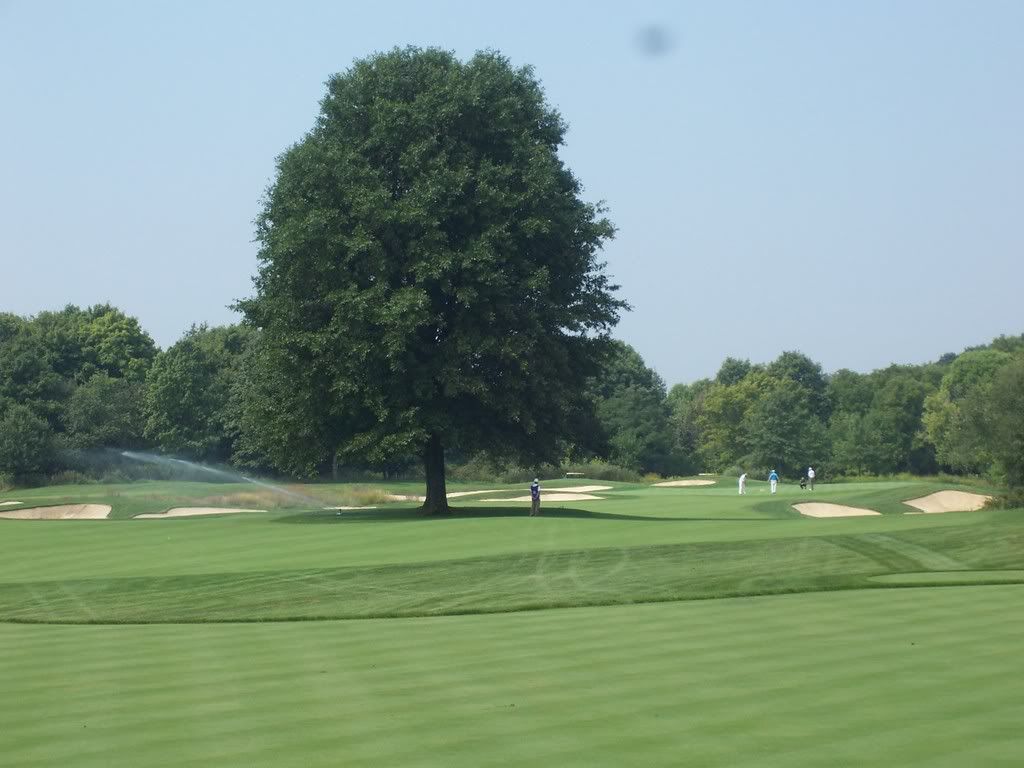
The golf course ends with a par 5. This is the tee shot...the fairway is very wide, but a nasty bunker sits right in the middle:
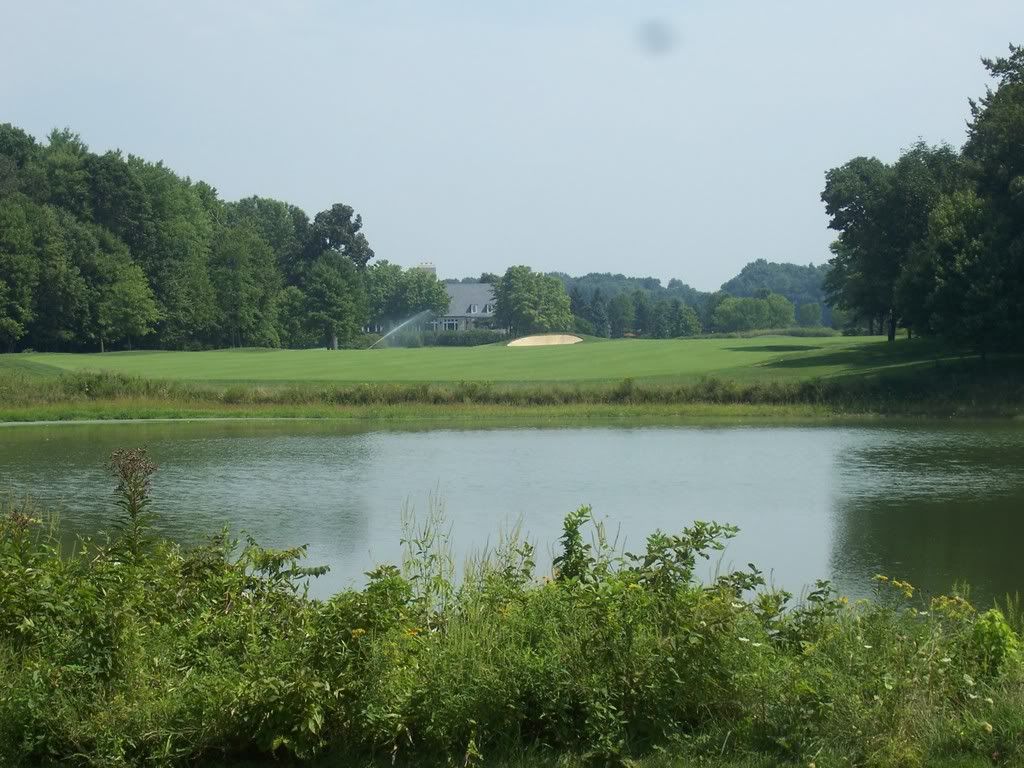
This is the approach. The first 30 or so feet of the green is a false front, that will send balls back down to the fringe:
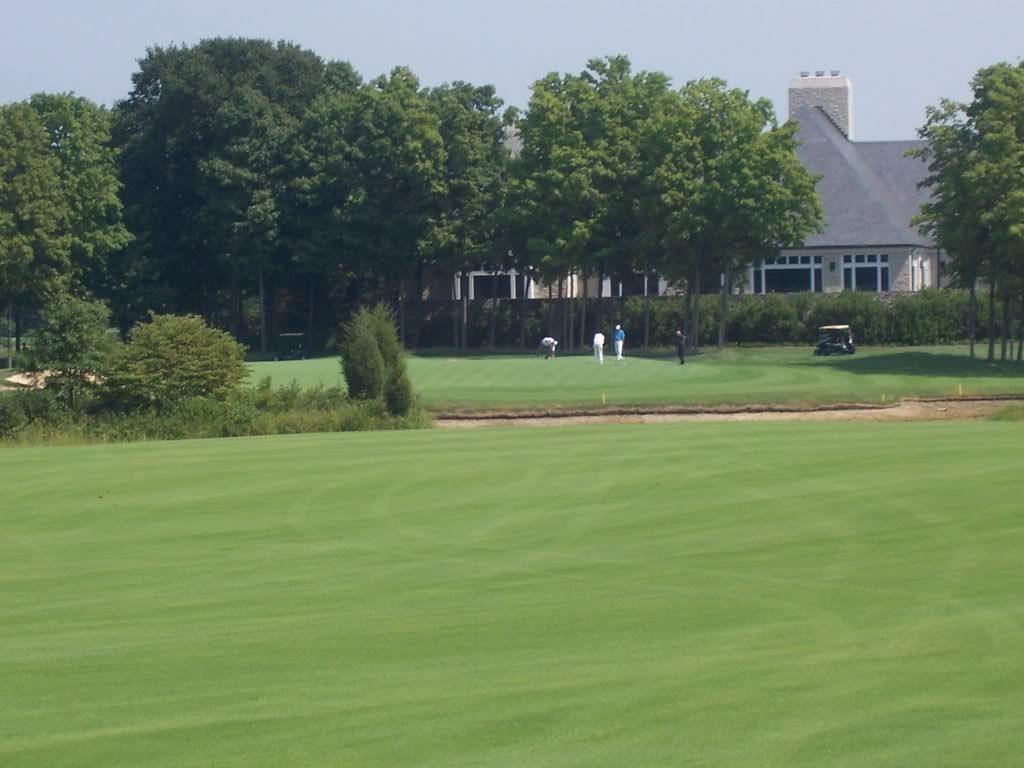
The green is very long, and going over it is no fun. This is behind the eighteenth green:

The "bye" hole:
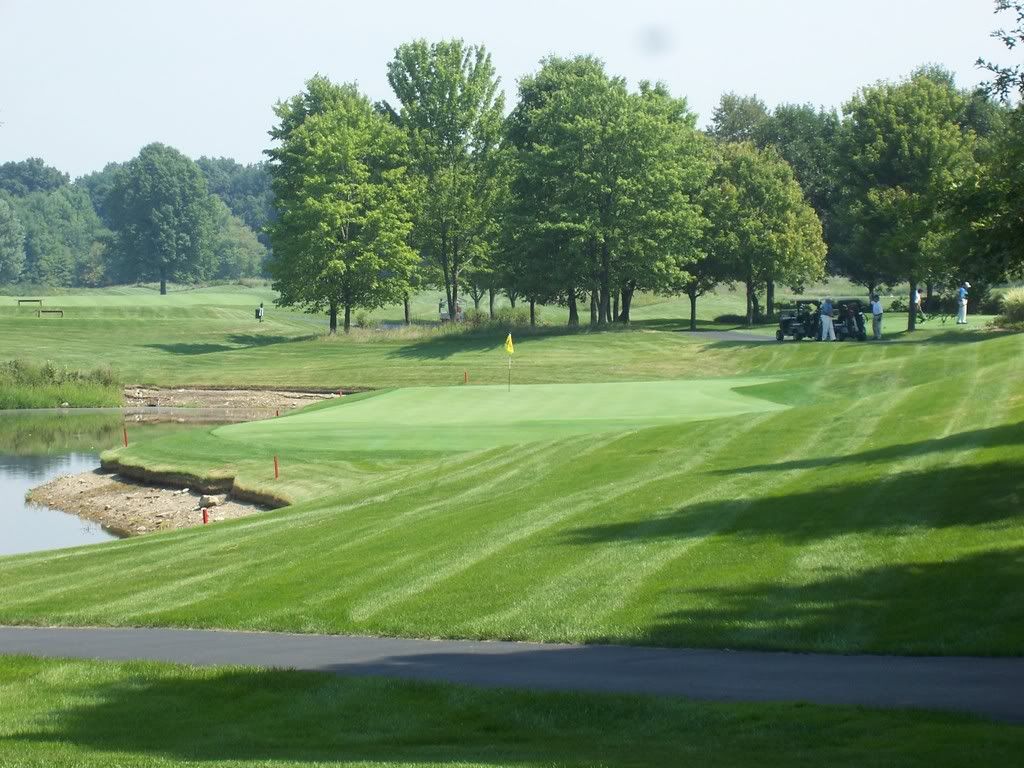
I find Double Eagle to be very playable. Much like Camargo, you can shoot a good score if you play well. It is a treat to play a golf course that is in such good shape, where you are treated so well.
After our round, we hopped in ther car and drove 20 minutes to The Golf Club!